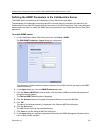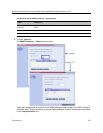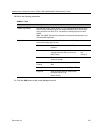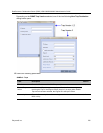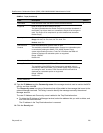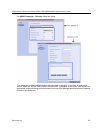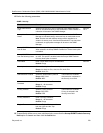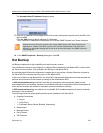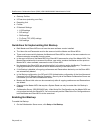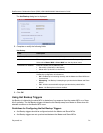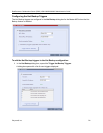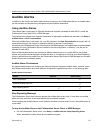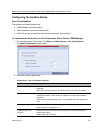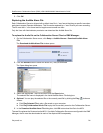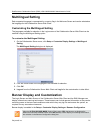
RealPresence Collaboration Server (RMX) 1500/1800/2000/4000 Administrator’s Guide
Polycom®, Inc. 710
● Gateway Profiles
● IVR services (excluding .wav files)
● Recording Link
● Profiles
● IP Network Settings:
H.323 settings
SIP settings
DNS settings
Fix Ports (TCP, UDP) settings
QoS settings
Guidelines for Implementing Hot Backup
● Both Master and Slave MCUs must have the same software version installed.
● The Users list and Passwords must be the same on both the Master and Slave MCUs.
● There must be connectivity between the Master and Slave MCUs, either on the same network or on
different networks connected through routers.
● In the event of failure of the Master MCU the Slave MCU assumes the role of the Master MCU. The
Master/Slave relationship is reversed: the Slave, now active, remains the Master and the previous
Master MCU, when restarted, assumes the role of Slave MCU.
● No changes to the Slave MCU are permitted while it is functioning as the Hot Backup. Therefore no
ongoing conferences or reservations can be added manually to the Slave MCU.
● If Hot Backup is disabled, all ongoing conferences and Reservations backed up on the Slave MCU
are automatically deleted.
● In Hot Backup configuration, the SIP and H.323 Authentication configuration of the User Name and
Password in the IP Network Service Properties - Security tab of the Master Collaboration Server are
not backed up in the Slave Collaboration Server.
● Master and Slave initial roles can be reversed only after all ongoing conferences and Reservations
are deleted.
● Changes to the Master MCU that require a System Reset can only be made after Hot Backup is
disabled.
● Collaboration Server 1500/2000/4000 only: Video/Voice Port Configurations on the Master MCU are
not synchronized with the Slave MCU. You must manually set the Video/Voice Port Configurations on
both the Master and Slave MCUs to the same level.
Enabling Hot Backup
To enable Hot Backup:
1 On the Collaboration Server menu, click Setup > Hot Backup.



